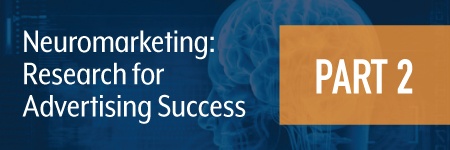
Sean Doyle
Sean is a principal at FitzMartin, and our leading mind and voice on sales and marketing strategy. Sean is particularly adept at applying the science of behavior change to the art of sales and marketing. It’s an approach that he and FitzMartin have developed over thousands of client engagements since 1992.
Never miss a post
Subscribe below to receive blog updates.
We’re always hearing about new technology that changes the face of business. With all of the innovation in the past few decades, it’s hard to keep up. But new friend and guest author Jeremy Bagnall takes a clear approach to explaining the new technologies that are advancing neuromarketing, so you don’t have to worry about being behind on the technological lingo. Just like marketing automation technology is creating huge strides in the efficiency and success of digital marketing, new technologies like fMRI scans and EEGs are helping the neuromarketing world gain results that directly impact the marketing world. Continuing in the series, check out what Jeremy has to say on the topic…

At FitzMartin, we’ve always relied on a solid base of cognitive science and behavioral marketing to inform our decisions for clients. We understand the value of knowing the science behind how and why consumers react the way they do, and the implications this has for business best practices in all areas. In this particular article, a new friend of ours, thinker and writer Jeremy Bagnall explores the implications that neurology can have on marketing, and what methods have already been used to improve the effectiveness of advertising.
Neuromarketing, or the application of neurology to marketing, is a concept that has been gaining momentum as technology increasingly evolves. As you’ll see in this first part of Jeremy’s writing, neuromarketing has the potential to impact how we approach marketing initiatives. Interesting food for thought…
Sean
Smell, taste, and touch are psychological marketing elements that a customer subconsciously uses when they are viewing a promotion and marketers generally overlook these rudiments. The findings from neuroscience are able to benefit marketers and give way to information about these elements. The marketer is able to tap into consumer senses with promotional campaigns. Emotional engagement and memory retention are also useful and important elements for marketers to consider. These elements can be exposed by neuroscience experiments and these experiments may be able to give marketers what they finally desire, the ability to read a consumer’s mind.
The scientific approach to neuromarketing is extremely essential to the entirety of the researching process. The aforementioned scientific tools aid in bridging the gap with what marketers do not know and what they desire to know about the consumer. fMRI techniques can be effective. It is a similar process to a regular MRI but it focuses specifically on brain activity and the response to presented stimuli. Additionally, the functional aspect of the fMRI is established when the participant is asked to acknowledge and give a reaction to the stimuli, viewing an advertisement. Also, the fMRI scanner then acquires the brains response to the stimuli and records and gives a breakdown on the activity going on in the participant’s brain.
The fMRI machine records brain activity by presenting colored activity spikes within sections of the brain. These “activity spikes” are triggered by blood flow and oxygen demanded by the brain. Depending on what section of the brain projects the most activity will determine if the advertisement is perceived as favorable or unfavorable. Unfortunately, this method can be somewhat costly for an organization to acquire the research they desire from their consumers. The fMRI technique would require access to an MRI machine as well as the necessary human resources to interpret and apply the data collected.
Testing Methods
Similar to fMRI, Electroencephalography is used to evaluate whether a subject is engaged with the stimuli and whether there is a positive or negative emotional response to said stimuli. EEG uses neurons attached to the scalp of the participant and the neurons communicate by passing electrical signals along connecting fibers (trueimpact.com). This method is prominently used for showing the activity from both halves of the brain. Typically, greater activity on the left ventral region of the brain is where positive emotional feedback can be found. A consumer’s memory retention is a key component in the advertising aspect of business. EEG is able to present the researchers with the necessary brain activity feedback on the patient’s ability to recall the advertising stimuli that they viewed in the tests. Also, researchers are able to give a verbal test on the participant’s memory retention on the presented stimuli. They can then cross reference the EEG results to confirm if they are accurate with the verbal test results.
EEG has shown in some studies to be less effective compared to the powerful research method of fMRI. For example, the fMRI method is able to show active brain activity vividly with color resonance feedback with precise location anywhere in the brain; similar to how weather radar reports cloud activity. However, EEG can show similar results with the accuracy that marketing researchers may desire. EEG testing is a more frequently used technique because it is a safe method and relatively inexpensive compared to fMRI. This technique is also most powerful when considering video advertisements, but it will not be able to compare to the clarity of the fMRI when dealing with standard imaging. Additionally, EEG is able to provide moment-by-moment data of the attention and emotional measures of the participant (neurostrat.com).
Eye Tracking is another pioneering technique in the neuromarketing field that involves distinguishing where exactly the participant is looking when presented advertising stimuli. The participant is given an ocular device that will technologically track their eye movements as they view an advertisement. The device will then record where the attention is drawn from and which focal points the participant primarily focuses on. Duration and exposure are elements involved in eye tracking, and they report the length of time the participant’s focus remains on a given section of the stimuli. Scan path and rapid eye movements show the observed pattern of eye movements over an image and the change in location image (docsdrive.com).
It is an affordable method compared to fMRI and EEG techniques because of the difference in equipment costs. Nevertheless, a company will still have to acquire the human resources necessary for interpreting the results from the tests. For example, employees to administer and control the testing sequence as well as acquiring employees that will be able to analyze and utilize testing results.
Limitations and Restraints
Companies are not limited to specifically eye tracking as the sole method for neuromarketing research. Methods like fMRI and EEG are commonly used depending on factors like available financing, time, missions and goals, and current market position. There are many aspects similar to the aforementioned, but each neuromarketing method available (beyond the three approaches mentioned) is unique to each company and their purpose for acquiring the necessary neurological research to create a desired impact upon a target market.
Unfortunately, there are discerning issues with neuromarketing that can slow the evolution of the industry. The growth rate of neuromarketing will be contingent upon the a few components such as ethics, financing, quantity of neuroscientists, lack of technical expertise, and the publishing of findings. These limitations have a direct effect on shaping the structure of how this marketing research will be in the near future.
With ongoing studies, it is possible for ethical cases to arise against the methods that involve acquiring the neuropsychological information from subjects to use on the mass market. If the demand for this research continues to increase the expenses will subsequently increase making the use of neuromarketing limited to major corporations that possess the necessary finances. Neuroscientists are not exactly plentiful in number and there is not exactly a large number of experts entering the neuromarketing sector of this scientific field. Furthermore, it is an explicit profession that can be limited due to its specificity and lack of mobility. However, with raising awareness in this field, the previous statement is subject to change if neuroscience continues to flourish. Neuromarketing consulting firms are reluctant to share and publish their findings to the public, and this can slow progress because of the repetition of experiments that may have already been performed. Technical expertise is limited because it is pioneering and technology knowledge can only advance as fast as the number of performed experiments.
Like what you read? You can read the full white paper by clicking below.
About the Author:
Jeremy Bagnall is a graduate of the University of Montevallo Stephens College of Business where he studied Marketing. He was also a student of the baseball diamond and one of the leading members of the Falcon Pitching Staff. Jeremy's passion for advertising is directly relevant to his passion on the pitcher’s mound. As he explains it, pitching comes down to the constant mental battle with the player at home plate. The pitcher is continuously striving to stay one step ahead, and plan his next move based upon what pitches he has displayed for the hitter. Both players are trying to get inside one another’s thought process and predict what is coming up next. Marketing is essentially the same concept; attempting to stay ahead of the curve and decipher consumer responses, behavior, and buying habits.
Contact Jeremy:


